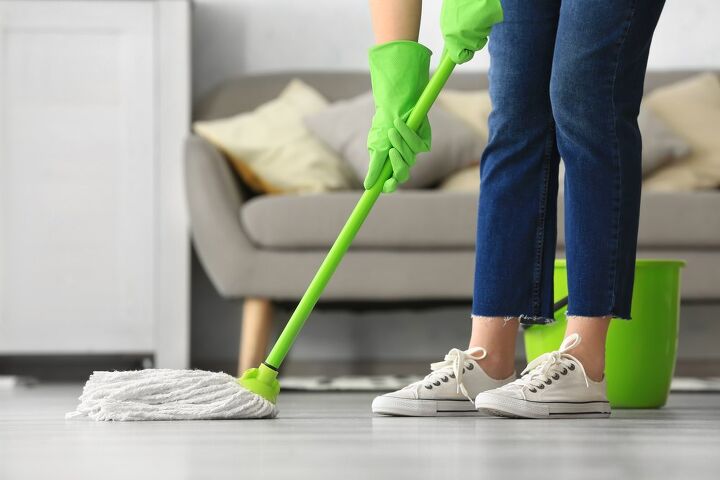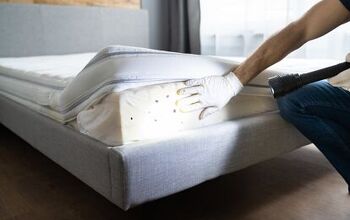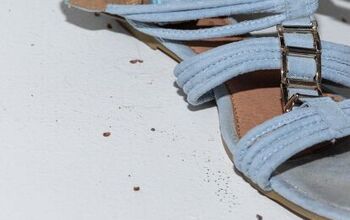When Can I Mop After Bed Bug Treatment? (Find Out Now!)

Finding bed bugs in your home can be sickening. These unwelcome guests can set up a camp in your home that is hard to shut down. Luckily, there are Pest Control Experts whose job is to send these bed bugs packing. After the exterminators have attacked the source with proper treatment, you will need to carry on the work by taking the correct steps. How soon is too soon to mop after bed bug treatment?
You will want to avoid mopping and heavy cleaning for the first 24 hours after treatment. While many bed bugs may have been killed on contact, it is unlikely that all the bed bugs have died after one chemical treatment. Mopping too quickly may undo the exterminator’s work.
Here are some guidelines for how to treat your home after it has been treated for bed bugs.
Do You Need Pest Control Services?
Get free, zero-commitment quotes from pro contractors near you.

Cleaning Your Home after Bed Bug Treatment
The exterminators have come out to take care of the bed bugs, the insecticides have dried and you have made it back into your home. Although you won’t want to mop floors for the first 24 hours, what cleanup is a good idea?
Open doors and windows
When you return to your house after 4 to 6 hours, you will want to open windows and even doors. This will bring fresh air into your house so you are not breathing in fumes left from the treatment.
Wipe down counters and food prep surfaces
You can wipe down counters in the kitchen, bathroom, and tables to prevent ingesting any toxic chemicals.
Fully encase mattresses
You will want to continue to sleep in your bed until all bed bugs have died off. If you move to a new area in your house, it is very likely the bed bugs will follow you there. Encase mattresses to prevent any surviving bed bugs from crawling on you at night. Pestauthority.com suggests leaving this encasement on for 1 year to make sure all bed bugs have died from either the treatment or starvation.
Do laundry
Wash and dry any affected bedding on high heat. Adult bed bugs will die at 119 degrees and eggs will die off at temperatures higher than 125 degrees. Some bed bugs may be able to survive the wash cycle, but the dry cycle should finish off most bed bugs. It is a good idea to wash and dry even unused bedding for at least 30-minute cycles in case the bed bugs have hidden in the creases.
Vacuum
Vacuum floors and dispose of the vacuum bag, or the contents in an airtight bag. You will want to vacuum every day for the first few days after treatment. Continuing to vacuum regularly can prevent a further infestation in your home.
Mopping 24 Hours after Treatment
After the insecticide has had time to work at least 24 hours, it should be safe to mop your floors. Especially if you have pets or small children, it is understandable that you won’t want their skin coming in contact with the insecticides.
The first time you mop your floors after bed bug treatment, you still may want to avoid mopping near the wall or baseboards, however. These areas are less likely to be trafficked by small feet and some of the most likely places to harbor any remaining bed bugs. By leaving this treated border a little longer, you can provide a barrier that bed bugs will not want to cross.
Prevent a New Infestation
After you have treated your home, you will want to use preventative measures to keep bed bugs away. It may take a few weeks for all bed bugs to disappear from your home. Eggs are more resistant to treatment and generally well hidden so new bed bugs can hatch in the next few weeks. Here are some steps that can help you prevent further bed bug infestation.
- Inspect your home regularly for bed bugs in the affected area. Bed bugs can travel quickly and can flee a toxic area. This means you will want to check the adjacent rooms, as well. The Environmental Protection Agency recommends inspecting your home thoroughly every 7 days.
- Clean out any clutter so bed bugs won’t have so many areas to hide.
- Continue to wash and dry clothes on as high a heat as the material will stand.
- Vacuum regularly, especially behind furniture and near walls.
- Seal cracks in the baseboards, floorboards, or walls. Make sure any walls that are adjacent to your neighbors are well-sealed off as well.
- Set traps or interceptors at the legs of your bed and furniture to catch any remaining bed bugs.
Your Pest Control Technician will most likely return for 1 or 2 follow-up treatments. If he leaves specific instructions for prevention, follow his advice.
Do You Need Pest Control Services?
Get free, zero-commitment quotes from pro contractors near you.

Related Questions
What is the main cause of bed bug infestations?
Most consider travel to be the main way bed bugs enter a home. A traveler can easily pick up these small hitchhikers on clothing and baggage and transport them to a new location without realizing it. Most won’t even realize that they have picked up bed bugs until they start seeing bites show up on their skin.
What are the first signs of bed bugs?
Adult bed bugs are generally only as big as apple seeds and wait until night to come out. This means they can easily go undetected. The first signs of bed bugs you may notice are dark brown or black fecal stains on your sheets, bites on your skin, shed bed bugs skins, bloodstains on your sheets, and the bugs themselves or white eggs.
Are bed bugs a result of poor hygiene?
Bed bugs are not a direct result of poor hygiene or an unclean house. They can be found in apartments, condos, or homes. If you begin to see signs of bed bugs around your house you will want to call out an exterminator sooner rather than later. Bed bugs are not known to carry diseases, however, they can cause discomfort and sleep loss. You may need to treat just one room or the whole house depending on the size of the infestation.

Alex Praytor is a native Texan who got her degree in English Literature and decided to travel the globe. She finds the architecture and design of homes across cultures fascinating. In her spare time, she visits coffee shops with her family and creates projects for their own home. Alex enjoys sharing tips on how to keep repairs up to date while turning a house into a home.
More by Alex Praytor












![Finishing Basement Without Permit [Is It Really Illegal?]](https://cdn-fastly.upgradedhome.com/media/2023/07/31/9070078/finishing-basement-without-permit-is-it-really-illegal.jpg?size=350x220)








![10 Most Dangerous Neighborhoods in Baltimore [Updated]](https://cdn-fastly.upgradedhome.com/media/2023/07/31/9075655/10-most-dangerous-neighborhoods-in-baltimore-updated.jpg?size=350x220)

![12 Washing Machine Brands to Avoid [with Recall Data]](https://cdn-fastly.upgradedhome.com/media/2023/07/31/9075781/12-washing-machine-brands-to-avoid-with-recall-data.jpg?size=350x220)



